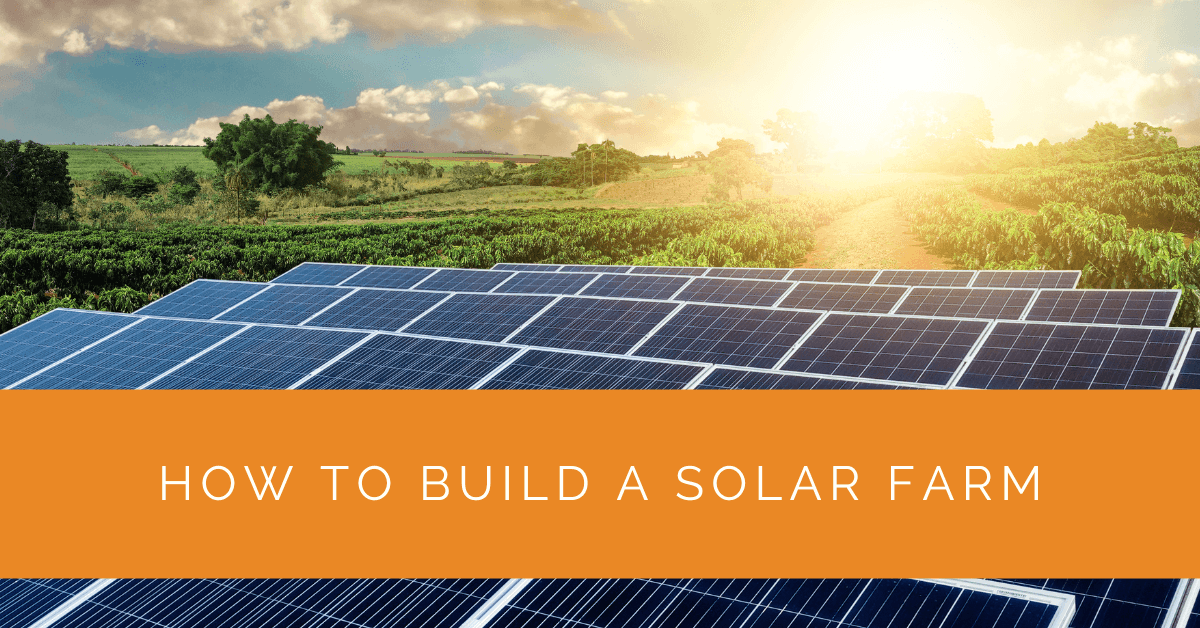Building a solar farm presents an exciting opportunity to contribute to clean energy generation in a world increasingly focused on renewable energy. This comprehensive guide will walk you through starting a solar farm, from planning and design to construction and operation. Let’s delve into the details of each step to help you embark on your solar farm journey.
Contents
- 1 Planning and Preparation
- 2 Design and Engineering a Solar Farm
- 3 Permitting and Regulatory Compliance
- 4 Construction and Installation
- 5 Operation and Maintenance
- 6 Case Study: Building a Successful Solar Farm from Planning to Operation
- 7 Expert Insights From Our Solar Panel Installers About How to Build a Solar Farm: A Step-by-Step Guide
- 8 Experience Solar Excellence with Us!
- 9 Conclusion
Planning and Preparation
The planning and preparation phase is crucial for laying the foundation of a successful solar farm project. It involves carefully considering various factors and conducting in-depth assessments to ensure optimal site selection and feasibility.
Site Selection
Selecting the right site is a critical first step in building a solar farm. Consider the following factors when evaluating potential locations:
- Solar Resource Availability: Assess the site’s solar irradiance and sunlight patterns. Look for areas with high solar potential and minimal shading from nearby structures or vegetation.
- Land Characteristics: Evaluate the land’s topography, soil quality, and drainage. Flat or gently sloping terrains are generally more suitable for solar installations, while areas prone to flooding or unstable soil may present challenges.
- Proximity to Electrical Infrastructure: Determine the site’s proximity to existing electrical infrastructure, such as substations or power lines. Access to reliable transmission and distribution lines simplifies grid connection and reduces costs.
- Environmental Impact Assessment: Conduct an environmental impact assessment to identify any potential ecological or environmental concerns associated with the site. Consider factors such as habitat conservation, water sources, and protected areas.
Feasibility Study
Conducting a comprehensive feasibility study is crucial before moving forward with a solar farm project. This study evaluates the project’s technical, economic, and regulatory aspects to ensure its viability. Consider the following during the feasibility study:
- Energy Generation Potential: Assess the solar resource potential of the site using historical weather data and solar modeling tools. This evaluation will provide insights into the expected energy generation capacity of the solar farm.
- Financial Analysis: Conduct financial analysis to determine the project’s economic viability. Consider factors such as capital investment, operating costs, expected revenue from energy sales, available incentives, and return on investment.
- Permitting and Regulatory Requirements: Identify the permits and regulatory approvals required for the project. This includes environmental permits, zoning permits, interconnection agreements, and compliance with local, state, and federal regulations.
- Grid Connection Assessment: Evaluate the grid connection possibilities and the capacity of the local electrical grid to accommodate the solar farm’s energy output. Assess the need for upgrades or reinforcements to the grid infrastructure.
- Community and Stakeholder Engagement: Engage with the local community and relevant stakeholders to address any concerns and build support for the project. Collaboration and open communication with community members, local authorities, and environmental organizations can help streamline the permitting process.
By conducting a thorough site selection process and feasibility study, you can ensure that your solar farm project aligns with your goals and has the potential for long-term success. These assessments provide the necessary groundwork for the subsequent design, permitting, and construction stages, enabling you to move forward in your solar farm venture confidently.
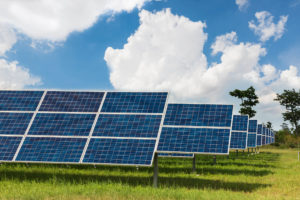
Design and Engineering a Solar Farm
The design and engineering phase of building a solar farm involves creating an efficient and optimized system layout that maximizes energy production while considering technical specifications and site constraints. This phase requires careful consideration of various factors to ensure a successful and cost-effective solar farm project.
System Sizing and Layout
Determining the optimal system size and layout is essential for maximizing energy generation and utilizing available land effectively. Consider the following aspects during the design process:
- Available Land Area: Assess the total land area available for the solar farm. Evaluate the land’s dimensions, shape, and potential limitations or restrictions that may impact the layout.
- Solar Irradiance: Analyze the solar resource data of the site to identify areas with the highest solar irradiance. Design the layout to optimize panel placement in these high-sun areas while accounting for any shading from surrounding structures or natural features.
- Electrical Infrastructure: Consider the existing electrical infrastructure and design the layout to minimize the distance between the solar panels and the interconnection point. This helps reduce transmission losses and simplifies the electrical wiring and connection process.
- Future Expansion: Consider the potential for future expansion of the solar farm. Leave room for additional solar panels or equipment if you plan to scale up the project in the future. Strategic planning for expansion can save time and costs down the line.
Component Selection
Selecting the right components for your solar farm ensures reliable operation and optimal performance. Consider the following factors when choosing solar panels, inverters, and other equipment:
- Solar Panels: Evaluate different types of solar panels, such as monocrystalline, polycrystalline, or thin-film, based on their efficiency, durability, warranty, and cost. Choose panels that best suit your project’s requirements and budget.
- Inverters: Select inverters compatible with the chosen solar panel technology and meet the system’s electrical requirements. Consider factors such as efficiency, reliability, monitoring capabilities, and warranty.
- Mounting Structures: Choose sturdy and durable mounting structures that withstand local environmental conditions, including wind, snow, and temperature variations. Ensure the structures are adjustable to optimize panel tilt angles for maximum energy production.
- Balance of System Components: Consider the selection of cables, combiner boxes, monitoring systems, and other balance of system components. Choose high-quality components compatible with solar panels and inverters to ensure seamless integration and efficient operation.
Collaborate with experienced solar engineers and suppliers to design a solar farm layout that maximizes energy generation, meets technical specifications, and complies with industry standards. By selecting the right components, you can enhance the performance and longevity of your solar farm, ensuring a successful and efficient renewable energy project.
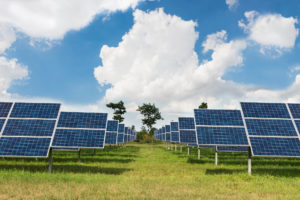
Permitting and Regulatory Compliance
Navigating the permitting and regulatory landscape is critical to building a solar farm. The process involves obtaining the necessary permits, complying with regulations, and engaging with local authorities and stakeholders to ensure a smooth and successful project implementation.
Permitting Process
The permitting process involves obtaining the required approvals and permits at various stages of the solar farm development. Consider the following aspects during the permitting process:
- Environmental Permits: Assess the environmental impact of the solar farm and obtain the necessary permits for land use, water resources, and wildlife protection. This may include permits for wetland impact, erosion control, stormwater management, and endangered species protection.
- Zoning and Land Use Permits: Ensure compliance with local zoning regulations and obtain land use and development permits. This includes obtaining zoning variances, conditional use permits, or special permits specific to solar energy facilities.
- Construction Permits: Secure construction permits for site preparation, electrical infrastructure installation, and other construction-related activities. This ensures compliance with building codes, safety standards, and local regulations.
- Interconnection Agreements: Obtain interconnection agreements with the local utility or grid operator. These agreements outline the technical requirements, procedures, and terms for connecting the solar farm to the electrical grid.
Engaging with Local Authorities and Stakeholders
Engaging with local authorities and stakeholders is crucial to address concerns, gaining support, and navigating the permitting process. Consider the following approaches:
- Community Outreach: Engage with the local community to educate them about the benefits of solar energy and the positive impact of the solar farm project. Conduct public meetings, workshops, or informational sessions to address community members’ questions or concerns.
- Local Government Collaboration: Collaborate with local government officials, planning commissions, and regulatory bodies to ensure compliance with local regulations. Maintain open communication channels and address any specific requirements or concerns they may have.
- Environmental and Conservation Organizations: Consult with environmental and conservation organizations to understand their concerns and incorporate measures to mitigate environmental impacts. This collaboration can help build support for the project and demonstrate your commitment to responsible solar farm development.
By proactively engaging with local authorities, stakeholders, and the community, you can foster positive relationships, address concerns early on, and ensure a smoother permitting process. Seek guidance from experienced professionals and legal experts to navigate the complex regulatory landscape and ensure compliance with all applicable laws and regulations. A collaborative and proactive approach will contribute to the successful implementation of your solar farm project.
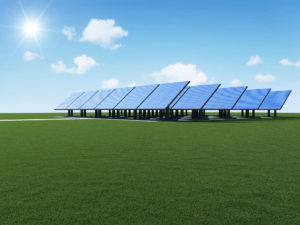
Construction and Installation
The construction and installation phase is where your solar farm takes shape. This stage involves site preparation, solar panel installation, and the establishment of the electrical system. Attention to detail and adherence to industry standards is crucial to ensure a safe and efficient solar farm installation.
Site Preparation
Before installing the solar panels, proper site preparation is necessary to create a solid foundation for your solar farm. Consider the following steps:
- Vegetation Clearing: Clear the site of any vegetation that may obstruct sunlight or interfere with the solar panel installation. This includes removing trees, shrubs, and other plants within the designated area.
- Grading and Leveling: Grade and level the ground to ensure a flat surface for solar panel mounting. This promotes optimal panel alignment and facilitates efficient installation.
- Infrastructure Improvements: Improve necessary infrastructure, such as access roads, security fencing, or drainage systems. These improvements enhance the overall functionality and security of your solar farm.
Solar Panel Installation
Installing solar panels is a critical aspect of building your solar farm. Follow these steps for a successful installation:
- Mounting Structure Assembly: Assemble the mounting structures according to the manufacturer’s instructions. Ensure the structures are robust, properly aligned, and securely anchored to the ground.
- Panel Placement: Carefully secure the solar panels onto the mounting structures. Ensure proper alignment and spacing between panels to maximize sunlight exposure and energy generation.
- Wiring and Electrical Connections: Connect the solar panels in series or parallel configurations according to the system design. Properly route and secure the electrical wiring, ensuring compliance with electrical codes and safety standards. Connect the panels to the inverters and other electrical components per the manufacturer’s guidelines.
Electrical System and Substation
Establishing the electrical system and substation is crucial for connecting your solar farm to the grid. Follow these steps for a successful installation:
- Inverter Installation: Install the inverters, which convert the solar panels’ direct current (DC) into usable alternating current (AC) electricity. Ensure proper placement, adequate ventilation, and adherence to manufacturer specifications.
- Transformer Installation: Install transformers to step up or down the voltage levels, as required for grid interconnection. Adhere to safety regulations and consult electrical professionals to ensure proper installation and compliance.
- Electrical Wiring and Connections: Connect the inverters, transformers, and other electrical components according to the system design and electrical diagrams. Properly label and secure all connections to ensure safety and ease of maintenance.
- Substation Establishment: Construct a substation to house the electrical equipment for grid interconnection. This includes switchgear, meters, protective devices, and communication systems. Ensure compliance with local electrical codes and regulations.
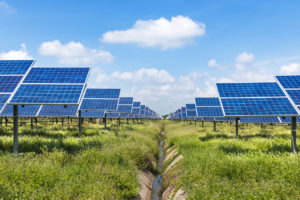
Operation and Maintenance
Once your solar farm is constructed and operational, proper operation and maintenance are essential to ensure optimal performance, maximize energy generation, and prolong the lifespan of your solar farm. Regular monitoring, maintenance activities, and safety measures are crucial components of this phase.
Monitoring and Performance
Monitoring the performance of your solar farm is key to identifying any issues and maximizing energy generation. Consider the following monitoring practices:
- Energy Production Monitoring: Utilize monitoring systems to track and analyze the energy production of your solar farm. Monitor the performance of individual panels, inverters, and the overall system to identify any underperforming components or potential faults.
- Data Analysis: Analyze the collected data to evaluate the performance of your solar farm over time. Identify any patterns or trends that may require attention, such as decreases in energy generation or inefficiencies in specific areas of the system.
- Fault Detection and Troubleshooting: Implement a comprehensive fault detection system to identify and address any equipment malfunctions or performance issues promptly. Regularly inspect the system for signs of damage, loose connections, or abnormal behavior.
Maintenance Activities
Regular maintenance activities are crucial for ensuring your solar farm’s long-term efficiency and reliability. Consider the following maintenance practices:
- Panel Cleaning: Regularly clean the solar panels to remove dirt, dust, and debris that can accumulate over time. This helps maintain optimal sunlight absorption and energy production. Use appropriate cleaning methods and avoid abrasive materials that can damage the panels.
- Electrical Component Inspections: Regularly inspect and maintain the electrical components of your solar farm. This includes checking wiring connections, inverters, transformers, and monitoring systems. Ensure that all connections are secure and functioning properly.
- Vegetation Control: Monitor and control vegetation growth around the solar farm to prevent the shading of the panels. Trim trees, shrubs, and other plants that may obstruct sunlight or pose a risk to the system.
- System Performance Testing: Conduct periodic performance testing to evaluate your solar farm’s overall efficiency and output. This may involve testing the voltage, current, and output of individual panels and analyzing the system’s performance against predicted values.
Safety and Security Measures
Implementing safety and security measures is vital for protecting your solar farm and ensuring the well-being of personnel. Consider the following practices:
- Safety Inspections: Regularly inspect the solar farm for any potential safety hazards. Check for loose connections, damaged equipment, or any other risks that may compromise the safety of workers or visitors.
- Security Measures: Implement appropriate security measures to protect your solar farm from theft, vandalism, and unauthorized access. This may include installing security cameras, fencing, signage, and access control systems.
- Emergency Response Planning: Develop an emergency response plan that outlines procedures for handling potential incidents, such as fire, extreme weather events, or equipment failures. Ensure that all personnel are trained and familiar with the plan.
By regularly monitoring performance, conducting maintenance activities, and implementing safety and security measures, you can ensure your solar farm’s long-term success and optimal performance. These practices will help you maximize energy generation, extend the lifespan of your equipment, and contribute to a sustainable and clean energy future.
Case Study: Building a Successful Solar Farm from Planning to Operation
Background
Solar Panels Network USA embarked on a project to develop a solar farm aimed at generating clean, renewable energy for a local community. The project required meticulous planning, site selection, design, and execution to ensure the solar farm’s success and long-term viability.
Project Overview
The objective was to construct a solar farm that maximizes energy production while ensuring compliance with environmental and regulatory standards. The project involved several key phases: planning and preparation, design and engineering, permitting and regulatory compliance, construction and installation, and ongoing operation and maintenance.
Implementation
Step 1: Planning and Preparation
Site Selection: The team assessed multiple potential sites, focusing on solar resource availability, land characteristics, and proximity to electrical infrastructure. A site with high solar potential, minimal shading, and close proximity to power lines was selected.
Feasibility Study: A comprehensive feasibility study was conducted to evaluate the project’s technical, economic, and regulatory aspects. This included energy generation potential, financial analysis, permitting requirements, and grid connection assessment. Engaging with local stakeholders and the community ensured support and streamlined the permitting process.
Step 2: Design and Engineering
System Sizing and Layout: The design phase involved determining the optimal system size and layout. The available land area and solar irradiance data were analyzed to maximize panel placement and energy generation. Electrical infrastructure was designed to minimize transmission losses and facilitate future expansion.
Component Selection: High-efficiency monocrystalline solar panels were chosen for their superior performance. Inverters and mounting structures were selected based on compatibility, durability, and cost-effectiveness. Balance of system components, including cables and monitoring systems, were integrated to ensure seamless operation.
Step 3: Permitting and Regulatory Compliance
Permitting Process: Environmental permits, zoning and land use permits, and construction permits were obtained. Interconnection agreements with the local utility were secured, outlining the technical requirements and procedures for grid connection.
Community Engagement: The project team conducted public meetings and informational sessions to address community concerns and highlight the benefits of the solar farm. Collaboration with local authorities and environmental organizations facilitated regulatory compliance and support.
Step 4: Construction and Installation
Site Preparation: The site was cleared of vegetation, graded, and leveled. Infrastructure improvements, including access roads and security fencing, were implemented.
Solar Panel Installation: Mounting structures were assembled, and solar panels were installed with proper alignment and spacing. Electrical wiring and connections were meticulously executed to ensure safety and efficiency.
Electrical System and Substation: Inverters, transformers, and other electrical components were installed and connected according to the system design. A substation was constructed to house electrical equipment for grid interconnection.
Step 5: Operation and Maintenance
Monitoring and Performance: A robust monitoring system was set up to track energy production and identify issues. Regular data analysis ensured the system’s efficiency and performance.
Maintenance Activities: Routine maintenance included cleaning solar panels, inspecting electrical components, and controlling vegetation growth around the farm. Periodic performance testing ensured the system operated at optimal efficiency.
Safety and Security Measures: Safety inspections and security measures, such as surveillance cameras and access control systems, were implemented to protect the solar farm and ensure the safety of personnel.
Results
The solar farm achieved its goal of generating clean, renewable energy for the local community. The system consistently produced high energy outputs, and regular maintenance ensured its longevity and efficiency. Community engagement and regulatory compliance contributed to the project’s success and sustainability.
Summary
This case study highlights the comprehensive approach required to build a successful solar farm. From meticulous planning and site selection to effective community engagement and ongoing maintenance, each step is crucial to ensuring the project’s long-term viability. By following these guidelines, Solar Panels Network USA was able to construct a solar farm that significantly contributes to the clean energy landscape.
Expert Insights From Our Solar Panel Installers About How to Build a Solar Farm: A Step-by-Step Guide
Selecting the right site for your solar farm is crucial. You need to consider solar resource availability, land characteristics, and proximity to electrical infrastructure to ensure optimal performance and cost-efficiency.
Senior Solar Installer
A comprehensive feasibility study is essential. It evaluates the project’s technical, economic, and regulatory aspects, ensuring the solar farm’s viability and setting the stage for successful implementation.
Lead Technician
Proper maintenance and regular performance monitoring are key to maximizing energy generation and extending the lifespan of your solar farm. It’s crucial to keep everything running smoothly and efficiently.
Solar Installation Specialist
Experience Solar Excellence with Us!
Trust in Solar Panels Network USA, where our seasoned experts deliver top-quality solar solutions for homes and businesses nationwide. With a legacy of countless successful installations and a commitment to sustainable energy, we’re your reliable partner in the solar journey. Ready for a brighter, eco-friendly future? Call us now at (855) 427-0058 and harness the power of the sun!
Conclusion
Building a solar farm is a rewarding venture that contributes to the growth of the solar industry and the supply of clean energy. By following this step-by-step guide, you can confidently embark on your solar farm journey. Embrace renewable energy opportunities and join the global movement towards a more sustainable future. Building a solar farm allows you to significantly impact the renewable energy landscape while creating economic opportunities and reducing carbon emissions.
Remember, building a solar farm requires careful planning, engineering expertise, and adherence to regulatory requirements. Following the steps outlined in this guide, you can navigate the complexities of starting a solar farm and set yourself up for success.
As the demand for clean energy continues to rise, solar farms play a vital role in meeting that demand and diversifying our energy sources. Leap into the solar industry, contribute to the clean energy transition, and make a lasting difference in your community.
Embrace the power of solar energy, harness the sun’s potential, and build a solar farm that not only generates renewable energy but inspires others to join the sustainable energy revolution. Let’s work together to create a greener, brighter future for future generations.
About the Author
Solar Panels Network USA stands at the forefront of solar energy solutions, driven by a team of seasoned solar engineers and energy consultants. With over decades of experience in delivering high-quality solar installations and maintenance, we are committed to promoting sustainable energy through customer-centric, tailored solutions. Our articles reflect this commitment, crafted collaboratively by experts to provide accurate, up-to-date insights into solar technology, ensuring our readers are well-informed and empowered in their solar energy decisions.

